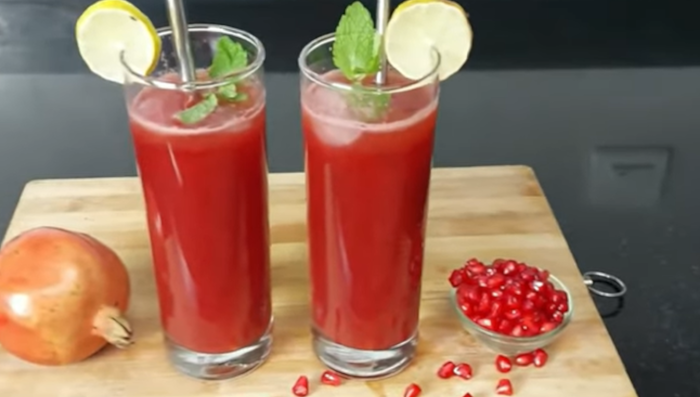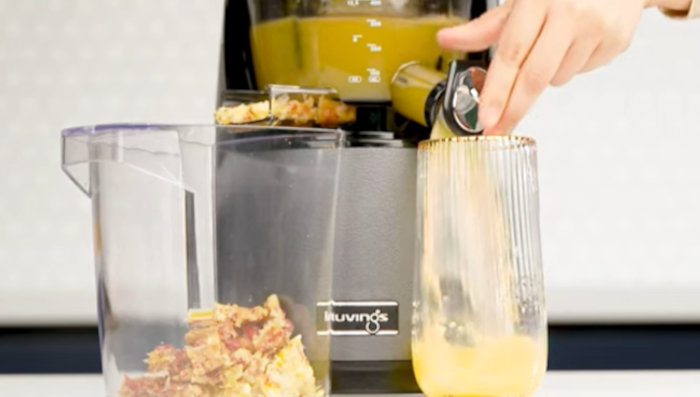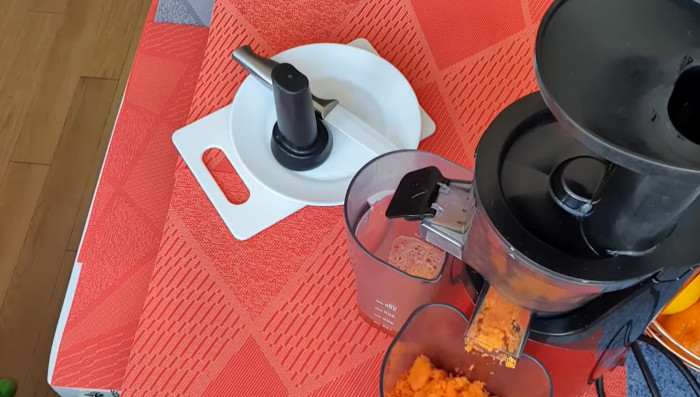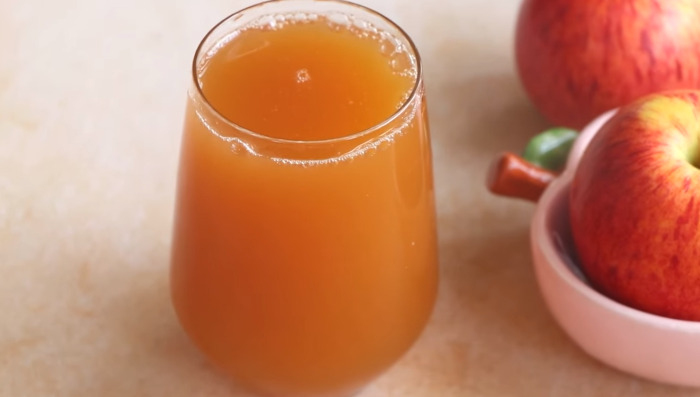Juicing has become more than just a trend; it’s a way to infuse our bodies with essential nutrients and antioxidants. From the tart taste of grapefruit to the vibrant splash of pomegranate, juices offer a convenient and delicious way to consume fruits and vegetables. But not all juices are created equal. Some are packed with vitamins and minerals, while others might be high in sugar and low in fiber.
Understanding the nutritional content of various juices is key to making informed choices. For instance, orange juice is a significant source of vitamin C, essential for skin health and iron absorption, while prune juice is known for its rich content of iron, magnesium, and B vitamins, often used as a remedy for constipation.
Whether you’re looking to boost your immune system or find a natural remedy for a common ailment, the world of juices offers a wide array of options. In this guide, we’ll explore the benefits and potential downsides of different juices, providing you with the knowledge you need to incorporate them into your diet in a healthy and balanced way.
5 Healthy Fruit Juice Recipes You Can Easily Make at Home:
1. Orange Juice
Ingredients:
Creating orange juice is simple and requires only a few key ingredients. Here’s what you’ll need:
- Oranges: Fresh, ripe oranges are the main ingredient. They provide the essential vitamin C and other antioxidants that make orange juice a nutritious choice.
- Water: Optional, if you prefer a milder taste or want to reduce the sugar content.
- Sweetener: Optional, such as honey or sugar, if you like your juice a bit sweeter. Keep in mind that adding sweeteners will increase the sugar content.
- Ice: Optional, for serving chilled.

Instructions:
Here are the step-by-step instructions for preparing orange juice.
- Select Oranges: Choose fresh, ripe oranges for the best flavor. The type of orange can affect the taste, so select according to your preference.
- Wash and Cut: Wash the oranges thoroughly and cut them in half.
- Extract the Juice: Use a citrus juicer or hand-squeeze the oranges to extract the juice. If you prefer pulp-free juice, you can strain it.
- Sweeten if Desired: If you like a sweeter taste, add a sweetener like honey or sugar. Stir well to dissolve.
- Chill or Serve with Ice: If you prefer chilled juice, refrigerate for a while or serve over ice.
- Adjust to Taste: Taste the juice and adjust the sweetness or dilute with water if needed.
- Serve and Enjoy: Pour into glasses and enjoy your homemade orange juice!
2. Pomegranate Juice
Ingredients:
Making pomegranate juice at home is a delightful way to enjoy this rich, dark-red beverage full of antioxidants. Here’s what you’ll need:
- Pomegranates: 2-3 large, ripe pomegranates. Select ones that feel heavy and are free of cuts and blemishes.
- Water: Optional, for diluting the juice if desired.
- Sweetener: Such as honey or sugar, to taste. This is optional and can be adjusted according to your preference.
- Lemon Juice: A splash of lemon juice can enhance the flavor. This is also optional.
- Ice: If you prefer your juice chilled.

Instructions:
Here are the instructions for preparing Pomegranate Juice:
- Cut the Pomegranates: Slice the pomegranates in half.
- Extract the Seeds: Hold a pomegranate half over a bowl, cut side down, and tap it with a wooden spoon to release the seeds.
- Blend the Seeds: If you prefer, you can blend the seeds for a few seconds to extract more juice.
- Strain the Juice: Use a fine-mesh strainer to separate the juice from the seeds and pulp.
- Add Sweetener and Lemon Juice: If using, stir in your preferred sweetener and a splash of lemon juice to taste.
- Chill or Serve Over Ice: Refrigerate the juice for a refreshing chilled beverage or serve immediately over ice.
- Enjoy: Savor the rich, antioxidant-packed flavor of your homemade pomegranate juice.
3. Pineapple Juice
Ingredients:
Following are the ingredients use for making Pineapple Juice:
- Fresh Pineapples: Choose ripe and juicy pineapples for the best flavor.
- Water: To adjust the consistency if desired.
- Sweetener: Optional, such as honey or sugar, to taste.
- Lemon or Lime Juice: A splash can add a tangy twist.
- Ice: If you prefer your juice chilled.
- Mint Leaves: Optional, for garnish or added flavor.
These ingredients allow for customization to suit your taste preferences. Whether you like your juice sweet, tangy, or somewhere in between, you can adjust the ingredients accordingly.

Instructions:
Making pineapple juice is a breeze with these simple instructions:
- Prepare the Pineapple: Peel, core, and chop the pineapple into chunks.
- Blend the Pineapple: Place the pineapple chunks in a blender and blend until smooth.
- Add Water if Needed: If the juice is too thick, add water to reach your desired consistency.
- Sweeten to Taste: If desired, add sweetener such as honey or sugar, and blend again to combine.
- Add a Citrus Twist: For a tangy flavor, add a splash of lemon or lime juice.
- Strain the Juice: If you prefer a smoother texture, strain the juice through a fine-mesh strainer.
- Chill or Serve over Ice: Pour the juice over ice or refrigerate until chilled.
- Garnish: Optionally, garnish with a mint leaf or pineapple wedge.
- Enjoy: Savor the fresh, tropical flavor of your homemade pineapple juice.
4. Apple Juice
Ingredients:
These are the ingredients required for making apple juice:
- Fresh Apples: Choose a mix of both sweet and tart apples, like Fuji, Gala, and Granny Smith.
- Water: To help in the blending process and adjust consistency.
- Sweetener (Optional): Honey, sugar, or agave nectar, depending on your preference.
- Lemon Juice (Optional): A splash can prevent oxidation and add a zesty flavor.
- Cinnamon or Nutmeg (Optional): For a spiced apple juice variant.
- Ice (Optional): If you prefer your juice chilled without refrigeration.
Remember, the quality of your apples will directly influence the taste of your juice. Opt for fresh, organic apples when possible.

Instructions:
Here are the step by step instructions for making apple juice:
- Wash and Prepare Apples: Rinse apples thoroughly and cut into quarters. Remove seeds if desired.
- Blend or Juice: Place apples in a blender or juicer. Add water if using a blender. Blend until smooth.
- Strain (if Blending): If you use a blender, strain the juice through a fine-mesh strainer or cheesecloth to remove pulp.
- Add Sweeteners and Flavorings (Optional): Stir in sweetener, lemon juice, or spices if using. Adjust to taste.
- Chill or Serve with Ice (Optional): Refrigerate for a cooler beverage or serve over ice.
- Enjoy Fresh: Apple juice is best enjoyed fresh but can be stored in the refrigerator for up to 3 days.
5.Watermelon Juice
Ingredients:
These ingredients create a refreshing and hydrating watermelon juice that’s perfect for hot summer days.
- Watermelon: 4 cups of fresh watermelon cubes, seedless or seeds removed.
- Lime Juice: 1 tablespoon, freshly squeezed (optional for added tanginess).
- Mint Leaves: A few fresh leaves for garnish or blending (optional for added freshness).
- Sweetener: Honey, sugar, or agave syrup to taste (optional if you prefer a sweeter juice).
- Ice: Crushed or cubes, for serving (optional for a chilled beverage).

Instructions:
These instructions provide a straightforward method to create a refreshing watermelon juice.
- Prepare Watermelon: Cut the watermelon into cubes, ensuring seeds are removed if not using seedless watermelon.
- Blend: Place the watermelon cubes in a blender. Add lime juice and sweetener if using. Blend until smooth.
- Strain (Optional): If you prefer a smoother texture, strain the juice through a fine-mesh strainer to remove any remaining pulp.
- Add Mint (Optional): If using mint, either blend with the watermelon or use as a garnish.
- Chill: Serve over ice or refrigerate until ready to enjoy.
- Garnish and Serve: Garnish with additional mint leaves or a slice of lime if desired. Serve chilled.
- Store: If not consuming immediately, store in an airtight container in the refrigerator for up to 2 days.
What are the benefits of fruit juice?
It’s important to note that while fruit juices offer many benefits, they should be consumed in moderation, especially those with added sugars.
- Nutrient-Rich: Fruit juices contain essential vitamins and minerals like Vitamin C, potassium, and antioxidants.
- Hydration: They provide a tasty way to stay hydrated, especially when water is infused with fruits.
- Digestive Aid: Certain juices, like pineapple, contain enzymes that can aid in digestion.
- Immune Support: The vitamins in citrus juices can boost the immune system.
- Energy Boost: Natural sugars in fruit juices provide a quick energy boost, especially post-workout.
- Convenience: For those on the go, fruit juices offer a quick and easy way to consume fruits.
- Versatility: They can be used in various recipes, from smoothies to marinades.
- Weight Management: When consumed in moderation, some juices can be part of a healthy weight management plan.
- Skin Health: Juices like orange and pomegranate promote healthy skin due to their Vitamin C and antioxidant content.
Side effects of fruit juice:
While fruit juices offer convenience and some nutritional benefits, these potential side effects highlight the importance of moderation and careful selection:
- High Sugar Content: Many commercial fruit juices contain added sugars, leading to increased calorie intake.
- Lack of Fiber: Juicing removes the fiber from fruits, which can affect digestion and fullness.
- Tooth Decay: Acidic and sugary juices can erode tooth enamel, leading to cavities.
- Weight Gain: Consuming fruit juices with added sugars regularly can contribute to weight gain.
- Blood Sugar Spikes: Fruit juices can cause rapid spikes in blood sugar levels, especially in those with diabetes.
- Potential Allergies: Some people may be allergic to certain fruits or additives in commercial juices.
- Drug Interactions: Certain fruit juices, like grapefruit, can interact with medications, altering their effectiveness.
- Calorie Overconsumption: Drinking fruit juices instead of eating whole fruits can lead to overconsumption of calories without feeling full.
- Artificial Additives: Some juices contain artificial flavors and preservatives, which may have negative health effects.
What Fruits Can You Use In A Juicer?
Juicing offers a delightful way to enjoy various fruits together, creating unique flavors and maximizing nutritional benefits. When it comes to combining fruits, the possibilities are nearly endless. Citrus fruits like oranges, lemons, and grapefruits blend well with sweeter fruits such as apples, pears, and pineapples. Berries, including strawberries, blueberries, and raspberries, can be paired with bananas or kiwis for a tangy twist.

For those looking to add a tropical flair, mangoes, pineapples, and coconuts make a perfect trio. Watermelon, with its high water content, mixes well with almost any fruit, providing a refreshing taste. If you’re seeking a nutrient boost, consider adding greens like spinach or kale to apple and cucumber juice. The mild flavors of these greens complement the sweetness of the fruits without overpowering them.
Remember, the key to successful juicing is balance. Combining fruits with contrasting flavors can create a harmonious blend that’s both tasty and nutritious. Experimenting with different combinations allows you to discover your personal favorites and enjoy a wide range of vitamins and minerals.
Is It Good To Have Mixed Fruit Juice?
Absolutely, but with some considerations. Mixed fruit juice offers a delightful way to enjoy a variety of flavors and nutritional benefits in one glass. By combining different fruits, you can create a unique taste profile and maximize the intake of various vitamins and minerals.
However, it’s essential to be mindful of the fruits you’re mixing. Some fruits blend well together, offering a harmonious taste, while others might clash. It’s also wise to consider the sugar content, as mixing too many sweet fruits can lead to a high-calorie beverage. If you’re watching your sugar intake, balance sweeter fruits with those that are more tart or add vegetables like spinach or kale.
Another aspect to consider is the freshness and quality of the fruits. Using ripe, fresh fruits ensures the best flavor and nutritional value. If you’re using store-bought mixed fruit juice, check the label for added sugars or preservatives, as these can diminish the health benefits.
Conclusion:
In conclusion, the journey through the world of fruit juices has been both enlightening and flavorful. We’ve explored the ingredients and instructions for making various juices, from orange to watermelon, and delved into the benefits and potential side effects of fruit juice consumption.
The art of mixing fruits has been examined, revealing that it can be a delightful experience when done thoughtfully. The information provided serves as a comprehensive guide for anyone looking to enjoy the natural goodness of fruits in liquid form. Whether you’re a health enthusiast or simply someone who enjoys a refreshing drink, the insights shared here offer a clear path to making the most of your juicing experience.
FAQs:
Is it good to drink fruit juice every day?
Drinking fruit juice every day can be a delightful way to boost your vitamin intake, but moderation is key. While fresh fruit juices provide essential nutrients, they can also be high in sugar and calories. It’s wise to balance juice consumption with whole fruits and other beverages to ensure a well-rounded diet. As a seasoned expert, I recommend enjoying fruit juices in moderation, considering your overall nutritional needs and preferences.
What are the Best Fruits To Juice For Weight Loss?
For weight loss, juicing fruits that are low in sugar and high in fiber can be beneficial. Citrus fruits like lemons and grapefruits, along with berries and green apples, are often recommended. These fruits not only provide essential vitamins but also contain fewer calories. Adding vegetables like spinach or kale can enhance the nutritional profile without adding extra sugar. Remember, moderation and a balanced diet are key to successful weight loss.







